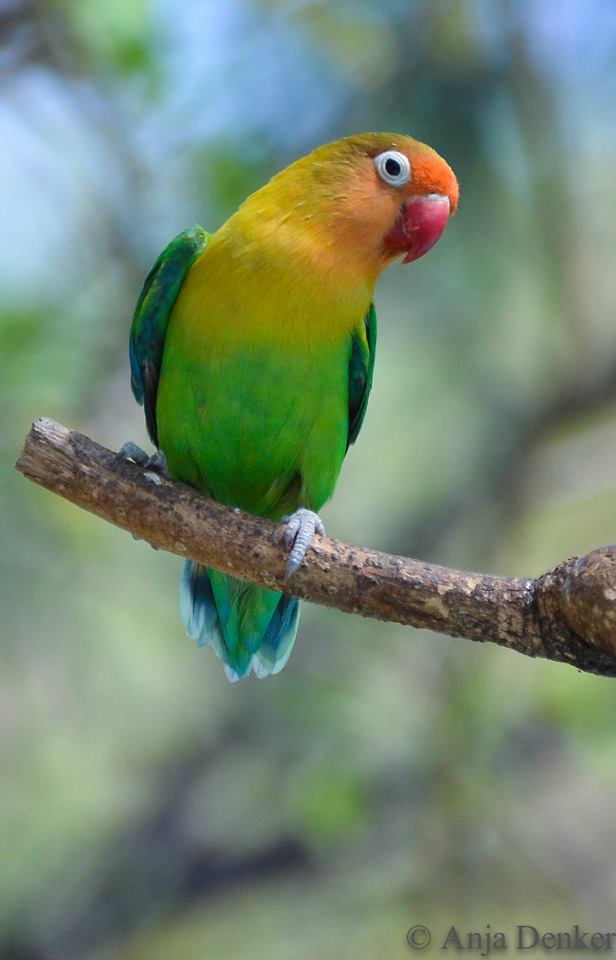Go to All Blogs | African Birding Blogs | Know Your Birds Blogs | African Birding Tours | All our birding tours
Last updated: 24 February 2021
“It was upper- and middle-class women who, in many ways, established the hobby of bird-watching. They were interested in nature and humane activities, rallying to end the shooting of songbirds and the slaughter of other species for their plumes.” (In the Field, Among the Feathered: A History of Birders and Their Guides by Thomas R Dunlap)
Perhaps it’s appropriate then that the Lilian’s Lovebird (Agapornis lilianae), a bird with one of the most beautiful plumages in Africa, was named after a woman. We don’t know much about Lilian Sclater, but her husband (who was first to describe this lovebird, in the late 1890’s) must have loved her very much to have had the bird named in her honor. Love – or the avian equivalent of it – is where the name “lovebird” originates from. These vibrant, petite birds of the parrot family are strongly monogamous, taking pair bonding very seriously. They often perch in close contact to each other and (just like embarrassing affectionate couples in restaurants on Valentine’s day) feed each other, which is known as “courtship feeding”.
Lilian’s Lovebirds eat mainly grass, fruit (e.g. from the Woolly Caper Bush tree, Baobab tree and some fig tree species) and seeds (e.g. from the Yellow Fever Tree). They spend a lot of time foraging on the ground but construct their nests in tree cavities, sometimes even abandoned buffalo weaver nests. They like choosing broad-leafed woodland areas with water close-by.
The breeding season for these pretty green, yellow and orange birds is from January to March. The female Lilian’s Lovebird incubates about four to five eggs for 22 days. From about 44 days after hatching, the chicks are ready to leave home.
So where’s the best place to see Lilian’s Lovebirds?
Lilian’s lovebirds are endemic to Malawi, Mozambique, Tanzania, Zambia and Zimbabwe. Our 15 day Malawi Tour presents a wonderful chance to see this bird, especially on a birding day in Liwonde National Park.
Did you Know?
Fossils of ancient lovebird species have been unearthed in South Africa, dating as far back as 1,9 million years ago!

